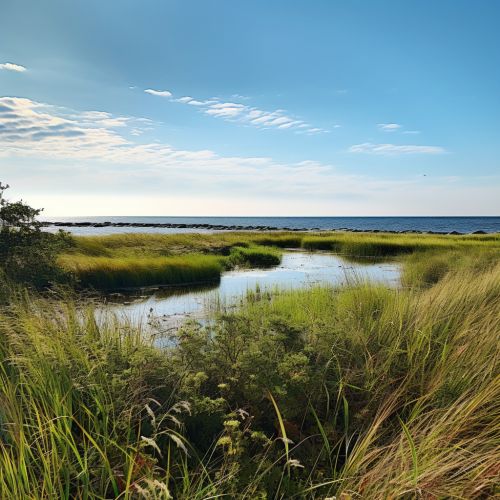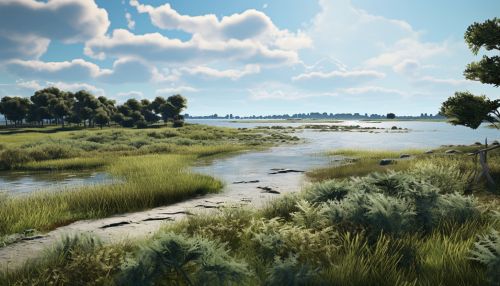The Ecology of Coastal Wetlands and Sea Level Rise Adaptation
Introduction
Coastal wetlands, also known as coastal ecosystems, are areas where land meets the ocean, creating a unique environment that supports a diverse range of plant and animal life. These ecosystems are critical for maintaining biodiversity, providing habitat for many species, and offering protection against coastal storms. However, they are increasingly threatened by sea level rise, a consequence of climate change. This article explores the ecology of coastal wetlands and the strategies being employed for their adaptation to sea level rise.


Coastal Wetland Ecology
Coastal wetlands are characterized by the presence of water, either permanently or seasonally. The water in these areas is usually brackish - a mixture of fresh water from land runoff and salt water from the ocean. This unique environment supports a diverse range of organisms, including various species of plants, birds, fish, and invertebrates. The productivity of coastal wetlands is often higher than that of other ecosystems, making them critical for supporting biodiversity.
Flora
The flora of coastal wetlands is adapted to survive in the challenging conditions of high salinity, waterlogged soils, and frequent inundation by tides. These plants, known as halophytes, have various adaptations such as salt excretion through leaves, reduced leaf size to minimize water loss, and specialized root systems for oxygen uptake. Examples of halophytes include mangroves, cordgrass, and sea lavender.
Fauna
Coastal wetlands support a diverse range of fauna, including numerous species of birds, fish, and invertebrates. Many bird species, such as herons, egrets, and ducks, use these habitats for feeding and nesting. Fish and shellfish species, including mullet, flounder, and oysters, utilize coastal wetlands as nursery areas. Invertebrates, such as crabs and snails, play a crucial role in nutrient cycling within these ecosystems.
Sea Level Rise and Coastal Wetlands
Sea level rise, primarily caused by climate change, poses a significant threat to coastal wetlands. As sea levels rise, coastal wetlands are inundated with salt water, which can lead to changes in vegetation composition, loss of wildlife habitat, and increased vulnerability to coastal storms. In addition, sea level rise can lead to increased erosion and land loss, further threatening these critical ecosystems.
Adaptation Strategies
Various strategies are being employed to help coastal wetlands adapt to sea level rise. These strategies can be broadly categorized into three types: protection, accommodation, and retreat.
Protection
Protection strategies aim to maintain the current state of coastal wetlands by reducing the impacts of sea level rise. This can be achieved through the construction of physical barriers such as seawalls and dikes, or through the restoration of natural defenses such as oyster reefs and mangrove forests.
Accommodation
Accommodation strategies involve making changes to the wetland ecosystem to allow it to continue functioning despite sea level rise. This can include the creation of artificial high marsh areas, the use of dredged material to raise the elevation of wetlands, and the implementation of policies to reduce human impacts on these ecosystems.
Retreat
Retreat strategies involve moving human activities and infrastructure away from coastal wetlands to allow these ecosystems to migrate inland as sea levels rise. This can involve the implementation of policies to restrict development in vulnerable areas, and the purchase and restoration of land for wetland migration.
Conclusion
Coastal wetlands are critical ecosystems that provide numerous benefits, including supporting biodiversity, providing wildlife habitat, and protecting against coastal storms. However, these ecosystems are increasingly threatened by sea level rise, a consequence of climate change. By understanding the ecology of coastal wetlands and implementing effective adaptation strategies, it is possible to help these ecosystems adapt to sea level rise and continue providing their many benefits.
